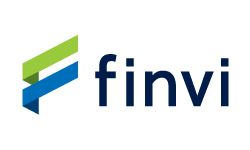
The new score, an update of FICO’s (Fair Isaac Corp.) UltraFICO Score, will rely on traditional data compiled by FICO and augmented by cash flow data collected by Plaid, according to a Thursday (Nov. 20) press release.
FICO is known for its score used by lenders to decide a borrower’s creditworthiness, while Plaid’s business is helping consumers connect online financial data across banks, FinTech apps and brokerages, the release said.
“By bringing together FICO’s trusted credit score intelligence with Plaid’s cash flow data, we’re creating the foundation for more comprehensive lending decisions,” Julie May, vice president and general manager of B2B scores at FICO, said in the release.
The partnership follows last month’s announcement of Plaid’s LendScore, a credit score that the company said is designed to create a more complete financial picture. It takes into account variable income, fluctuating expenses and financial activity that is spread across multiple platforms.
“High-quality cash flow data is becoming essential for lenders who want a more comprehensive view of a consumer’s financial picture,” Plaid Head of Partnerships Adam Yoxtheimer said in the Thursday press release.
Advertisement: Scroll to Continue
The enhanced UltraFICO Score will employ cash flow data, which is historical and current information about the money moving into and out of accounts like checking, savings or money market accounts. This will be accessed via Plaid’s “open finance network of consumer-permissioned data,” the release said.
The PYMNTS Intelligence report “Consumer Credit Economy: Strategy vs. Spontaneity—Navigating the Great Credit Divide” found that building or improving a credit score ranks as the top motivation for why people seek new credit cards.
Among people without an active card, 26% pointed to credit building as their chief reason for wanting one, ahead of rewards, convenience or managing cash flow.
Across credit, “using products strategically to strengthen financial standing is a dominant theme, particularly for Generation Z, prime and subprime borrowers, who see credit-building as a stepping stone to greater opportunity,” PYMNTS wrote Nov. 7.
Responsible card use can build a stronger credit profile, opening the door to more favorable terms, lower interest rates and higher limits.




